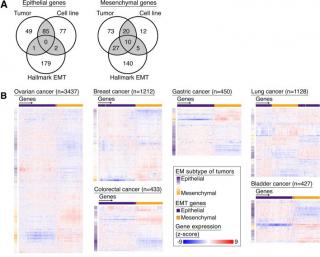May, 2022

The plasticity along the epithelial-mesenchymal transition (EMT) spectrum has been shown to be regulated by various epigenetic repertoires. Emerging evidence of local chromatin conformation changes suggests that regulation of EMT may occur at a higher order of three-dimensional genome level. We perform Hi-C analysis and combine ChIP-seq data across cancer cell lines representing different EMT states. We demonstrate that the epithelial and mesenchymal genes are regulated distinctively. We find that EMT genes are regulated within their topologically associated domains (TADs), with only a subset of mesenchymal genes being influenced by A/B compartment switches, indicating topological remodeling is required in the transcriptional regulation of these genes. At the TAD level, epithelial and mesenchymal genes are associated with different regulatory trajectories. The epithelial gene-residing TADs are enriched with H3K27me3 marks in the mesenchymal-like states. The mesenchymal gene-residing TADs, which do not show enrichment of H3K27me3 in epithelial-like states, exhibit increased interaction frequencies with regulatory elements in the mesenchymal-like states. We propose a novel workflow coupling immunofluorescence and dielectrophoresis to unravel EMT heterogeneity at single-cell resolution. The predicted three-dimensional structures of chromosome 10, harboring Vimentin, identify cell clusters of different states. Our results pioneer a novel avenue to decipher the complexities underlying the regulation of EMT and may infer the barriers of plasticity in the 3D genome context.